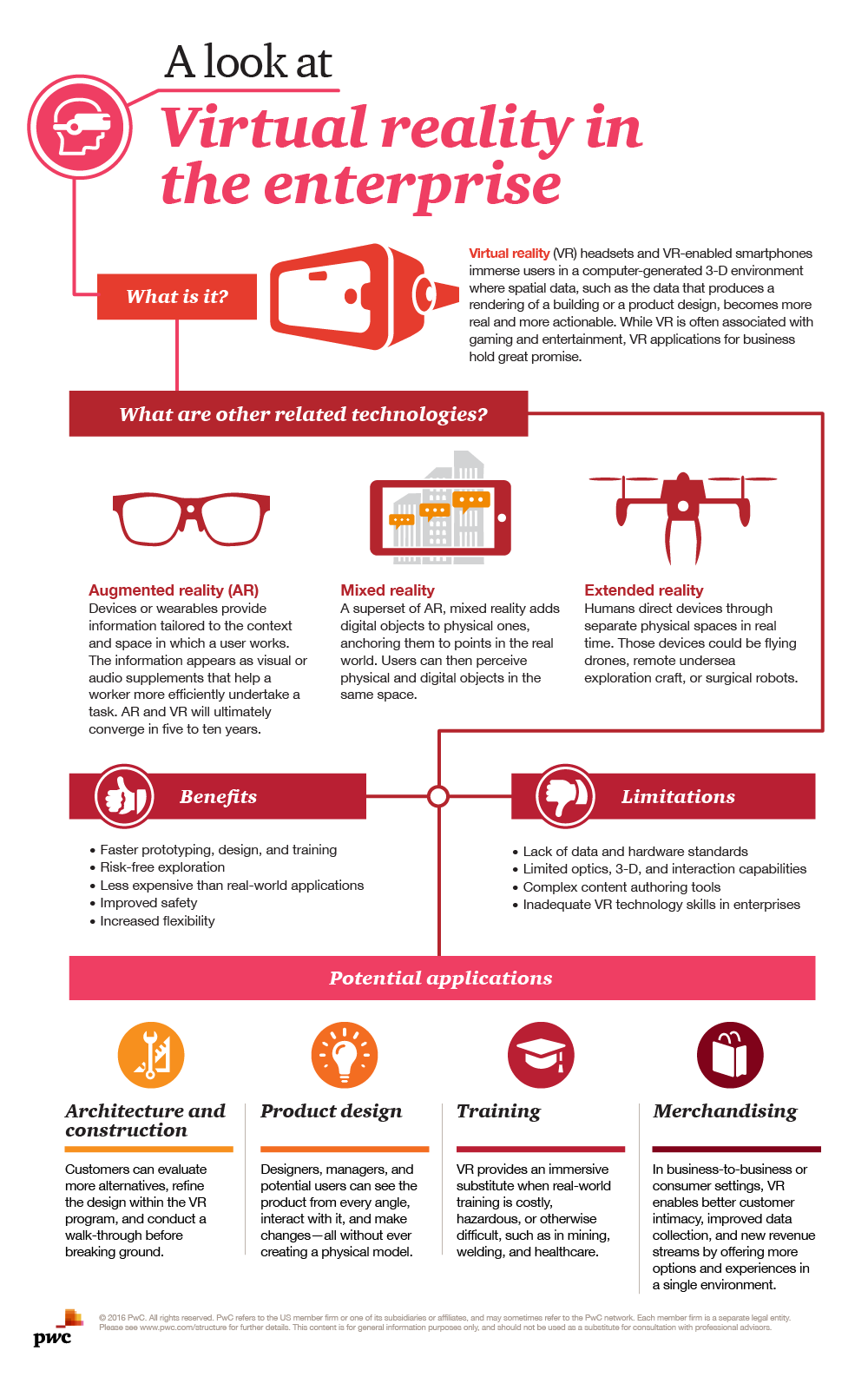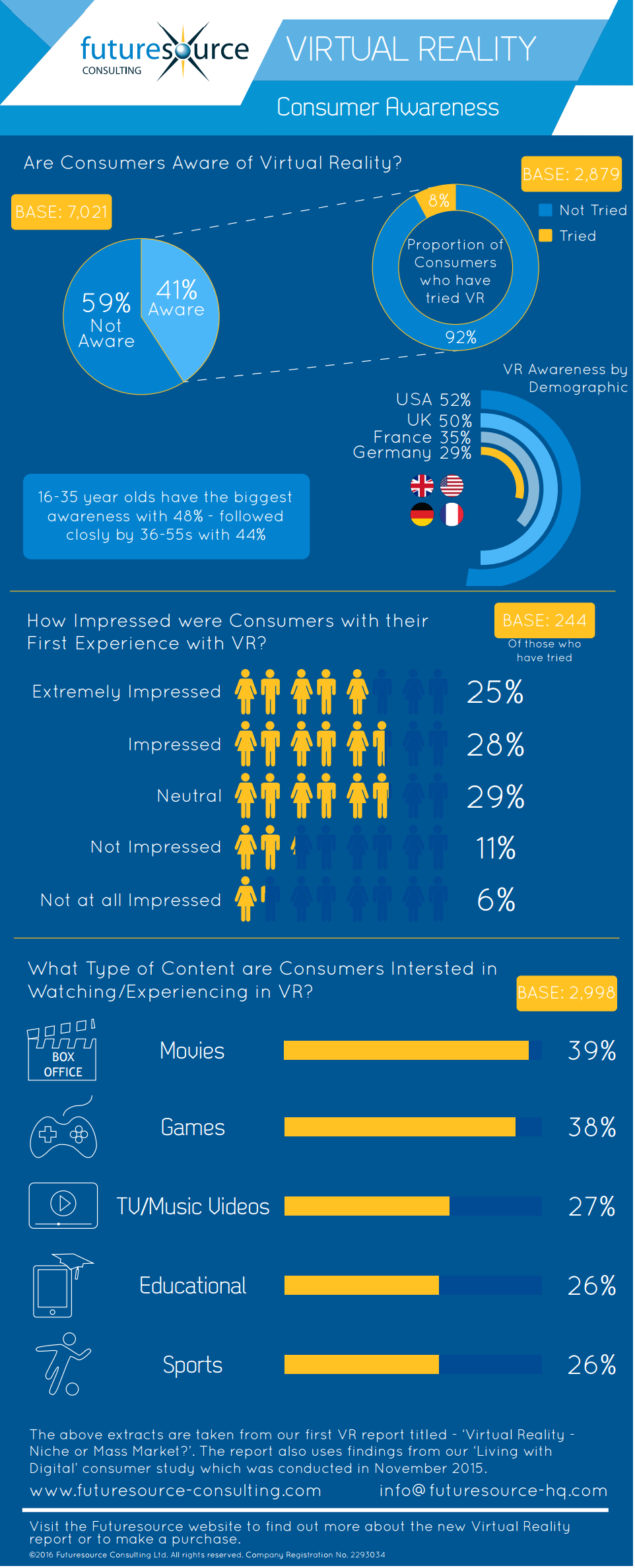Tag: digital
-

Infographic – VR in the Enterprise
Virtual Reality is a technology that immerses its users in a computer-generated 3D environment. Today, there are many other devices and technologies available that offer similar user experiences. Augmented Reality, for one, uses a wearable device to provide contextual information based on the user’s space at that moment. Mixed Reality overlays digital items to objects…
-

Infographic: New Realities: VR, AR & MR
As technology continues to advance, more variations of Virtual Reality will continue to arise. Mixed Reality, for one, combines Virtual Reality and Augmented Reality. Though these “new realities” are very similar, there are also very significant differences between them. In using Virtual Reality, a headset or smart glasses are required. This headset immerses the user…
-

Infographic: How We Use AR
Both Virtual Reality and Augmented Reality are growing in popularity across a variety of industries. The reputation of both is that they are primarily used for gaming and entertainment; however AR is actually being used to assist doctors, engineers, teachers, and more in their professions. By introducing AR into the classroom, students will have a new way to learn by…
-

Infographic – The History and Future of Augmented Reality
Unlike Virtual Reality, Augmented Reality does not immerse its user into a new environment; it enhances one’s reality by overlaying digital information onto things being viewed on a digital device. Though AR is rising in popularity in 2016, variations of it have been around since 1957 with Mortin Helig’s Sensorama machine as one such example.…
-

Infographic: Consumer Awareness of VR
New VR devices are being released more often now than ever from widely known companies including Google, Samsung, Mattel, and more. Despite the recent surge in VR devices, nearly 60% of people are still not aware of Virtual Reality and only 8% of people have tried Virtual Reality. The majority of those who are aware of…
-
The NGMR Top-5-Hot vs. Top-5-Not: Touchstone Research
@tstoneresearch @theburchyburch Today, we have been asked to participate in a top secret Next Gen Market Research collaboration project! What 5 things will continue to be ‘Hot’ and what 5 things will not in regard to Market Research in the next few years? With rapid change and advancements in technology and tremendous growth of…

